
Mingus Mingus Mingus Mingus Mingus is a studio album by the American jazz composer and bassist Charles Mingus which was released on January 9, 1964.
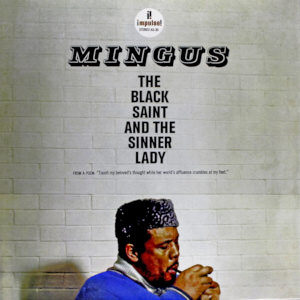
The Black Saint and the Sinner Lady is a studio album by Charles Mingus. It was recorded on January 20, 1963, and released in July of that year by Impulse! Records. The album comprises a single continuous composition—partially written as a ballet—divided into four tracks and six movements. It is widely regarded as one of the greatest jazz records of all time.

Mister Magic is the fourth album by jazz saxophonist Grover Washington Jr., released in February 1975. The album topped both the soul and jazz albums chart and peaked at number ten on the pop chart.
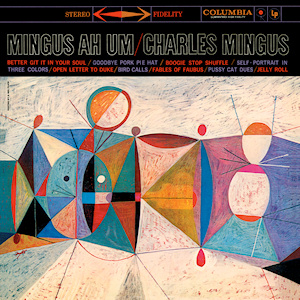
Mingus Ah Um is a studio album by American jazz musician Charles Mingus which was released in October 1959 by Columbia Records. It was his first album recorded for Columbia. The cover features a painting by S. Neil Fujita. The title is a corruption of an imaginary Latin declension. It is common for Latin students to memorize Latin adjectives by first saying the masculine nominative, then the feminine nominative, and finally the neuter nominative singular —implying a transformation of his name, Mingus, Minga, Mingum. The album was inducted into the Grammy Hall of Fame in 2013. It was ranked 380 on the Rolling Stone's 500 Greatest Albums of All Time.

Mingus at Antibes was originally issued by BYG Records under the title Charles Mingus Live With Eric Dolphy in Japan in 1974. It was recorded at a live 1960 performance at the Jazz à Juan festival at Juan-les-Pins by jazz bassist and composer Charles Mingus; and was re-released by Atlantic Records in more complete form as a double album with the title Mingus In Antibes in the United States in 1979.

Pithecanthropus Erectus is a studio album by jazz composer and bassist Charles Mingus. It was released in August 1956 through Atlantic Records. Mingus noted that this was the first album where he taught arrangements to his musicians by ear instead of putting the chords and arrangements in writing.

Search for the New Land is an album by jazz trumpeter Lee Morgan. A set with a group of regular Blue Note sidemen, Search for the New Land was recorded before The Sidewinder was released. Although it was recorded in 1964, the album was shelved for two years, then issued with the original catalogue number 84169.

Soulville is a 1957 album by swing tenor saxophonist Ben Webster, recording a session from October 15, 1957, which Webster played with the Oscar Peterson Trio.
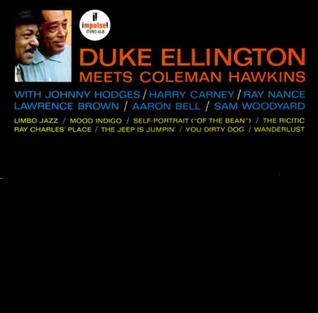
Duke Ellington Meets Coleman Hawkins is a jazz album by Duke Ellington and Coleman Hawkins that was recorded on August 18, 1962, and released in February 1963 by Impulse! Records.

Albert Ayler in Greenwich Village is a 1967 live album by American saxophonist Albert Ayler. It was his first album for Impulse! Records, and is generally regarded as being his best for the label. Originally released on LP, the album has since been reissued on CD.

Happy Time is a 1975 studio album by Roy Eldridge.

Tracks is a 1971 album by Oscar Peterson.

Time Waits, also known as The Amazing Bud Powell, Vol. 4, is a studio album by American jazz pianist Bud Powell recorded at Van Gelder Studio on May 24, 1958 with rhythm section Sam Jones and Philly Joe Jones and released on Blue Note later that year.
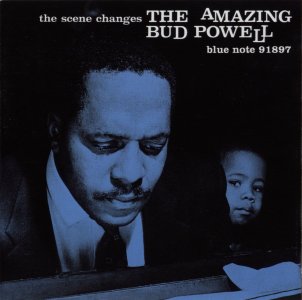
The Scene Changes, also known as The Amazing Bud Powell, Vol. 5, is a studio album by American jazz pianist Bud Powell recorded at the Van Gelder Studio in Hackensack, New Jersey on December 29, 1958 and released on Blue Note the following year. Powell is backed by rhythm section Paul Chambers and Art Taylor.

Changes Two is an album by Charles Mingus. It was recorded on 27, 28, and 30 December 1974 at Atlantic Studios in New York City—the same sessions which resulted in Mingus's album Changes One. Atlantic Records initially released the record; in 1993, it was issued on CD by Rhino Records.
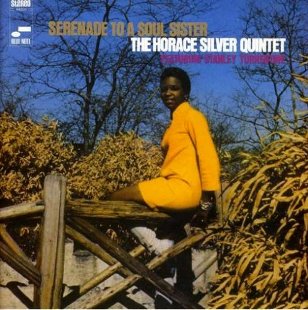
Serenade to a Soul Sister is an album by jazz pianist Horace Silver released on the Blue Note label in 1968, featuring performances by Silver with Charles Tolliver, Stanley Turrentine, Bennie Maupin, Bob Cranshaw, John Williams, Mickey Roker and Billy Cobham.

Pre-Bird is an album by jazz bassist and composer Charles Mingus consisting of music that was composed before Mingus first heard Charlie Parker, hence the title Pre-Bird. It was released on Mercury Records in September 1961.
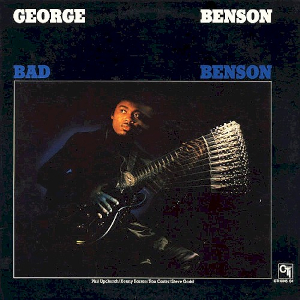
Bad Benson is a 1974 studio album by American guitarist George Benson, released on CTI Records.

Body Talk is a 1973 studio album by American guitarist George Benson, released on CTI Records.
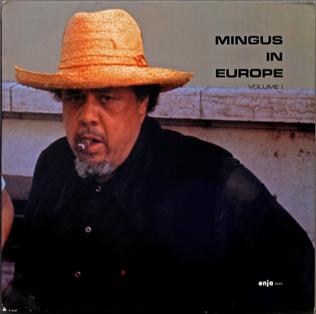
Mingus in Europe Volume I is a live album by the jazz bassist and composer Charles Mingus, recorded in 1964 in Stadthalle in Wuppertal, Germany and released on the Enja label in 1980.




















